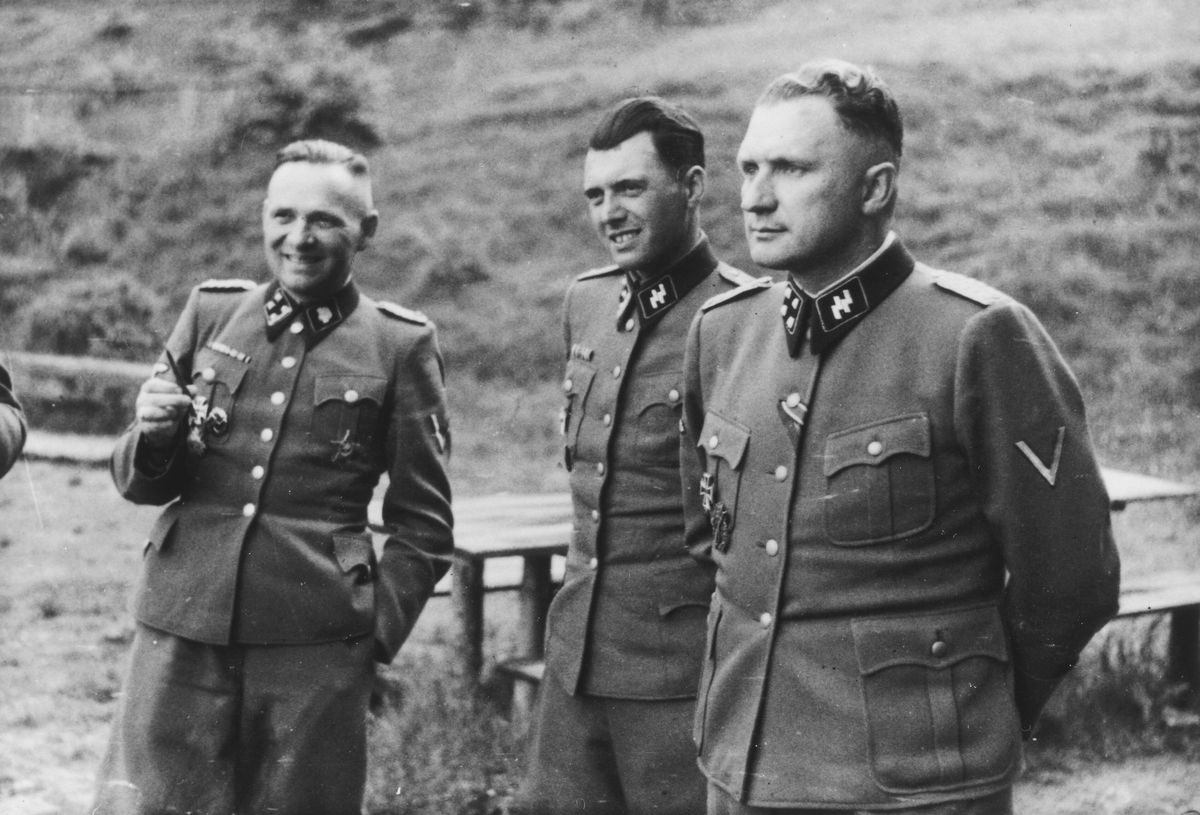
Rudolf Hoss was a name that struck fear during World War II. As the commandant of Auschwitz, he played a pivotal role in one of history's darkest chapters. But who was this man behind the uniform? Hoss wasn't just a faceless figure; his life was filled with complexities and contradictions. From his early years in Germany to his rise within the Nazi ranks, his story is both chilling and compelling. This blog post delves into 39 facts about Rudolf Hoss, shedding light on his actions, motivations, and the legacy he left behind. Prepare to uncover the unsettling truths about a man whose name will forever be linked to unimaginable horror.
Key Takeaways:
- Rudolf Hoss, a former Nazi leader, played a key role in the Holocaust, overseeing the murder of over 1.1 million people at Auschwitz. His actions serve as a chilling reminder of the dangers of blind obedience and the capacity for human cruelty.
- Despite his monstrous actions, Hoss had a family and lived a double life, showing a stark contrast between his role as a loving father and his brutal actions at Auschwitz. His life and legacy continue to be studied to understand the psychology of perpetrators of genocide.
Early Life and Background
Rudolf Hoss, a name etched in history, played a significant role during World War II. His life before the war shaped his actions and decisions.
- Born on November 25, 1901, in Baden-Baden, Germany, Hoss was the eldest of three children.
- His father, Franz Xaver Hoss, was a devout Catholic who wanted Rudolf to become a priest.
- At age 15, Hoss joined the German Army during World War I, lying about his age to enlist.
- He served in the Middle East and was the youngest non-commissioned officer in the German Army.
- After the war, Hoss joined the Freikorps, a paramilitary organization, where he participated in violent uprisings.
Rise in the Nazi Party
Hoss's involvement with the Nazi Party marked a turning point in his life, leading to his infamous role during the Holocaust.
- In 1922, Hoss joined the Nazi Party, influenced by his nationalist and anti-Semitic beliefs.
- He became a member of the SS (Schutzstaffel) in 1934, rising quickly through the ranks.
- Heinrich Himmler, head of the SS, recognized Hoss's organizational skills and loyalty.
- Hoss was appointed commandant of Auschwitz concentration camp in May 1940.
- Under his command, Auschwitz became the largest and most notorious Nazi death camp.
Role at Auschwitz
Hoss's tenure at Auschwitz was marked by unprecedented brutality and efficiency in mass murder.
- He oversaw the construction of Auschwitz II-Birkenau, designed explicitly for mass extermination.
- Hoss introduced Zyklon B, a cyanide-based pesticide, as the primary method of execution.
- He implemented a system of deception, making victims believe they were going for showers.
- Hoss's meticulous records show that over 1.1 million people were murdered at Auschwitz.
- He was known for his cold, detached demeanor, often referring to the killings as "work."
Post-War Capture and Trial
After the war, Hoss tried to evade capture but was eventually brought to justice for his crimes.
- Hoss fled Auschwitz in January 1945 as Soviet forces approached.
- He assumed a false identity and worked as a farmhand in northern Germany.
- British soldiers captured Hoss on March 11, 1946, after a tip-off from his wife.
- During his trial, Hoss showed little remorse, claiming he was just following orders.
- He provided detailed testimonies about the operations at Auschwitz, shocking the world.
Execution and Legacy
Hoss's execution marked the end of his life, but his actions left a lasting impact on history.
- On April 2, 1947, Hoss was sentenced to death by the Polish Supreme National Tribunal.
- He was hanged on April 16, 1947, at Auschwitz, near the crematorium.
- His memoirs, written while in prison, provide chilling insights into his mindset.
- Hoss's actions have been extensively studied to understand the psychology of perpetrators of genocide.
- His name remains synonymous with the horrors of the Holocaust.
Personal Life and Family
Despite his monstrous actions, Hoss had a family who lived near Auschwitz during his tenure.
- Hoss married Hedwig Hensel in 1929, and they had five children.
- His family lived in a villa just outside the Auschwitz camp, unaware of the full extent of his actions.
- Hoss was known to be a strict but loving father, a stark contrast to his role at the camp.
- His wife, Hedwig, remained loyal to him, even after his arrest and trial.
- The Hoss children faced stigma and ostracism due to their father's legacy.
Psychological Profile
Understanding Hoss's psychological profile helps explain his capacity for cruelty.
- Hoss exhibited traits of extreme obedience and loyalty to authority figures.
- He showed a lack of empathy, viewing prisoners as mere numbers rather than human beings.
- Hoss's writings reveal a belief in the Nazi ideology of racial purity and superiority.
- He rationalized his actions by claiming he was protecting Germany from its enemies.
- Psychologists have studied Hoss to understand how ordinary individuals can commit atrocities.
Impact on Holocaust Studies
Hoss's actions and testimonies have significantly contributed to Holocaust research and education.
- His detailed accounts of Auschwitz operations have been crucial for historians.
- Hoss's trial and execution set a precedent for prosecuting war criminals.
- His memoirs are used in educational programs to teach about the dangers of blind obedience.
- Hoss's life serves as a grim reminder of the capacity for human cruelty and the importance of vigilance against hatred.
Reflecting on Rudolf Hoss
Rudolf Hoss's life and actions leave a chilling mark on history. As the commandant of Auschwitz, his role in the Holocaust is a stark reminder of the depths of human cruelty. Understanding Hoss's background, motivations, and the atrocities committed under his watch is crucial for grasping the full scope of World War II's horrors.
Learning about figures like Hoss isn't just about recounting facts. It's about remembering the victims and ensuring such atrocities never happen again. History teaches us valuable lessons, and Hoss's story is a somber chapter that underscores the importance of vigilance against hatred and tyranny.
By reflecting on these facts, we honor the memory of those who suffered and reinforce our commitment to a more just and humane world. Let's never forget the past as we strive for a better future.
Frequently Asked Questions
Was this page helpful?
Our commitment to delivering trustworthy and engaging content is at the heart of what we do. Each fact on our site is contributed by real users like you, bringing a wealth of diverse insights and information. To ensure the highest standards of accuracy and reliability, our dedicated editors meticulously review each submission. This process guarantees that the facts we share are not only fascinating but also credible. Trust in our commitment to quality and authenticity as you explore and learn with us.


